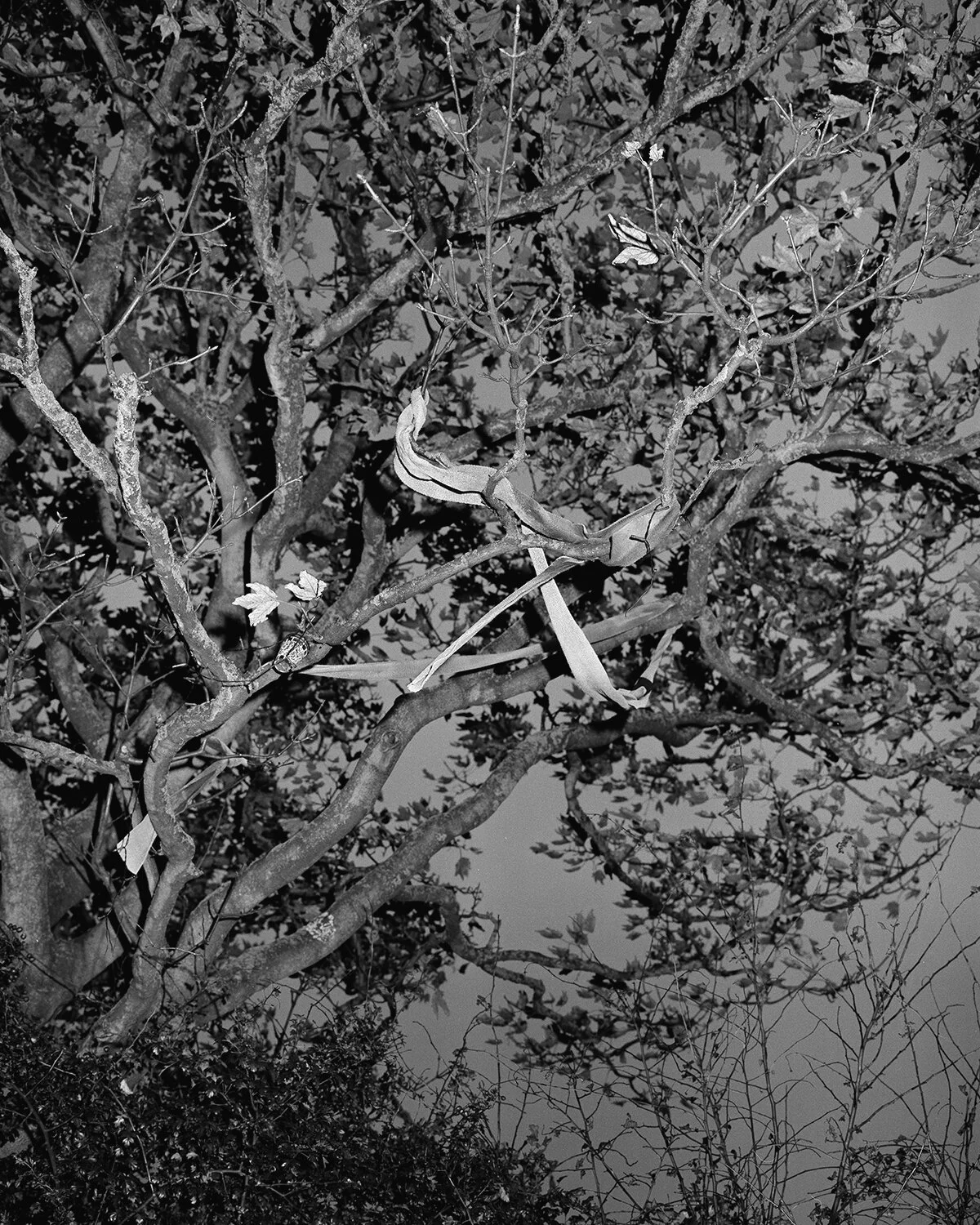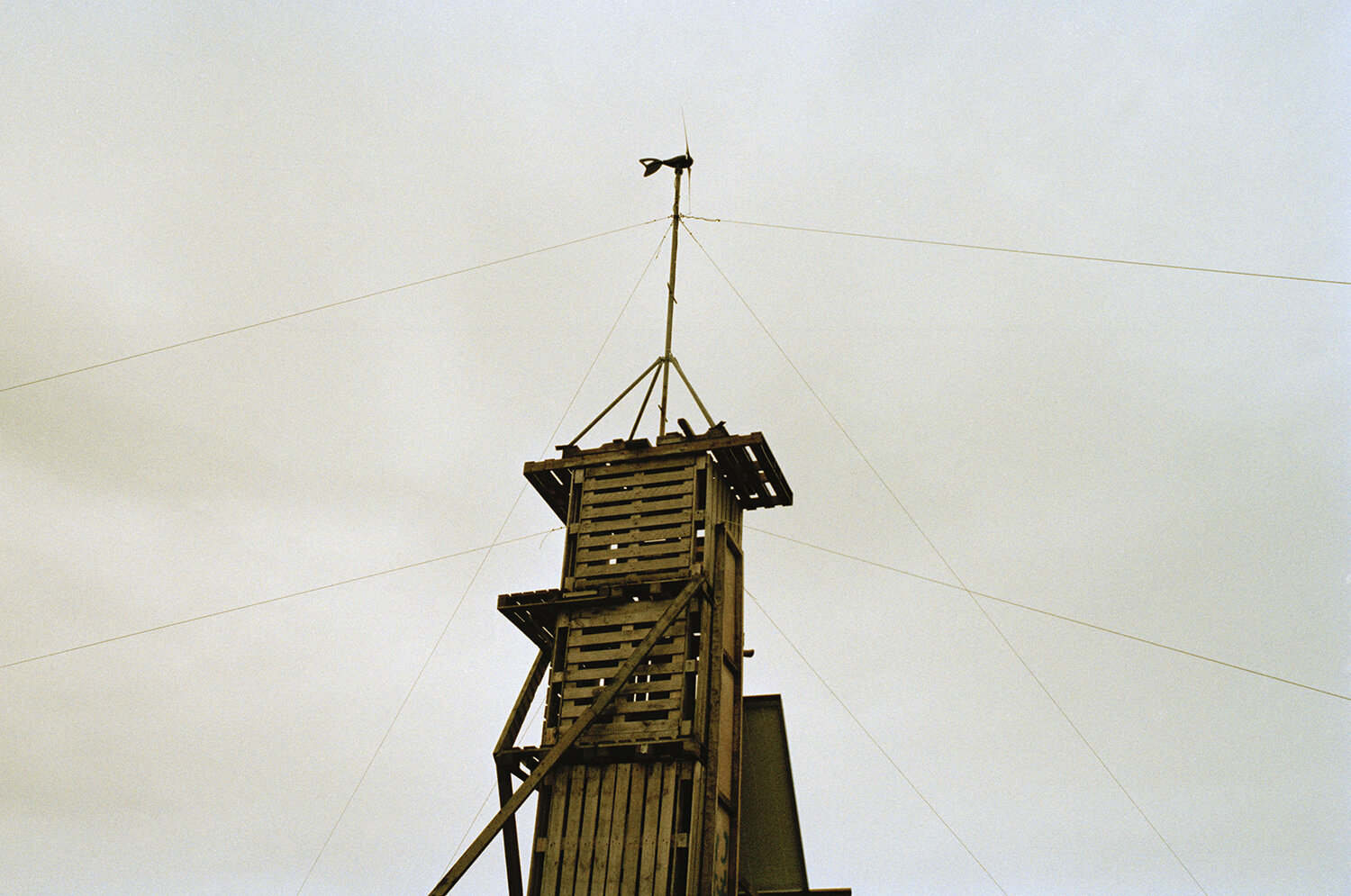Norberto Fernández Soriano- Hythloday
Hythloday is a body of work that draws from a community’s fight against fracking, and seeks to present their experiences and beliefs through a visual interpretation of what is positioned between fact and fiction. In the United Kingdom, the trial site for hydraulic fracture (shale gas fracking)–and its potential for national rollout and future commercial exploitation–is located in the countryside between the cities of Preston and Blackpool. A mile down the road from this site, a group of activists known to the local community as ‘The Protectors’, set up camp where they live and fight against this fracking trial.
In what might be described as a “photographic novella”, Hythloday transforms this physical place into an imagined post-fracking scenario, in which the activities, causes, fears, effects and thoughts constitute a potential future landscape. The project draws its title from a character’s name in Thomas More’s Utopia, and is used as a means to explore and understand the place itself, as well as ‘The Protectors’ fight. Hythloday combines the characters and elements on the ground with the suspended mood of an on-going protest to create a journey through an unknown and strange place; ultimately, revealing the tension between the subjects portrayed and the land they inhabit.
Continue below for the interview between Norberto Fernández Soriano and Alexa Fahlman
What inspired you to document this particular community's fight against fracking?
Initially I was interested in how this activity would modify the landscape and thus, the ways of living. I was also curious about showing the effects on the strained relationship between human and nature, especially in the rural areas where fracking is being tested. Since the effects manifest in the long term and can't be observed on the surface, I decided to explore the community’s fight against fracking, documenting their beliefs, fears and experiences.
Is this still an on-going fight?
The fight is still on-going, as the fracking is still on-going.
One of the most direct pieces of evidence that reveal the effects of this practice are the tremors which are felt in the surrounding areas. The monitoring system that should guarantee the so-called “safe” levels of fracking show that these have been surpassed on several occasions. Despite the different maneuvers to continue fracking, last December, all activity was finally halted on the site where the project Hythloday had been developed. Nevertheless the records confirm a real risk– trial sites for fracking keep on spreading across the country.
Is The Protectors' protest entirely for environmental reasons, or were the reasons also more varied, scattered, even?
The Protectors, as a group, is a cluster of environmental activists and people from local communities. The background of this group is very heterogenic, but fracking is what made them come together. Some of them are activists who have been involved in environmental issues their whole lives; some have long given up on today’s society; many were locals, directly affected by this activity; while others, disappointed with the reality they have had to face within their jobs, have decided to put their efforts into something more meaningful. Most of the local community would have never thought of themselves as protesters or environmental activists, they were leading a tranquil life in an environment free of threats to their lifestyle. When the fracking rumours started, people did a little bit of research and they soon realised that this was something they didn’t want happening near to their homes.
I think it is the communal sense of fight and resistance which ties them all together.
How do you think a liminal community be represented without falling into aesthetic cliches?
The creative process behind Hythloday focuses on the representation of this community through their beliefs rather than their real dimension. In the series, the scenario built up, lacking evidence of location or time. I took advantage of this, and used it as a medium to explore the community’s various state of mind, which is what I felt defined them as “subject matter”. To explore this new landscape, I focused on the seaman character from Thomas More’s Utopia, Raphael Hythloday. Utopia was a fictional story which portrayed the flaws of More’s governmental system through the depiction of an ideal organization located on a non-existent island. For my project, Raphael Hythloday became an inspiration to explore constructed landscapes, where fiction represents a possible future and thus, poses as a challenge to the so-called image of resistant communities.
Why do you think creative approaches are so effective when confronting serious subject matters- whether they be cultural or political?
A creative process allows both artists and observers to tackle projects from a conceptual point of view. This adds new layers of information and constructs a space for a broader sense of reflection. For instance, Hythloday stems from the fight of this community but raises other threads of concern, like the generation and consumption of news, truth and deception, and the privileging of certain opinions versus relating to personal experiences.
Photography especially seems to evoke empathetic engagement, what do you think it is about visual references which encourage mutual understanding and empathy? It seems that people need to actually see what others are going through to feel compassion.
In my opinion, pictures that encourage empathy and mutual understanding are usually related to what we perceive as familiar or weak. By this I mean that It comes from our inner experiences, but also from the enforced narratives within history. As a photographer, being aware of this will transform your photography. By reverting images that might traditionally confirm certain subjects as victims, and picturing them in a way which is closer to what they want to achieve–rather than what our blind, assuming eye might perceive– is the first step towards visualizing different realities.
How have you conceptualized a better world? I know there's no definitive answer for this one, but what do you think a better world might look like? How would you want society to move forward?
This project does not attempt to define in any way what a better world is. The community’s perception on fracking reveals the flaws of the system and many of the characteristics of a dystopian society. Their fight represents the resistance to the advance of environmental destruction and ways of life linked to this. My personal take on the idea of a better world shifts along as I face different situations and realities. To me, a better world should be based strongly on respect and mutual understanding. I believe that we have given up part of our freedom by neglecting certain responsibilities. A better future would mean a greater control through our actions, finding ways of depending less on systematic dynamics of power.




















